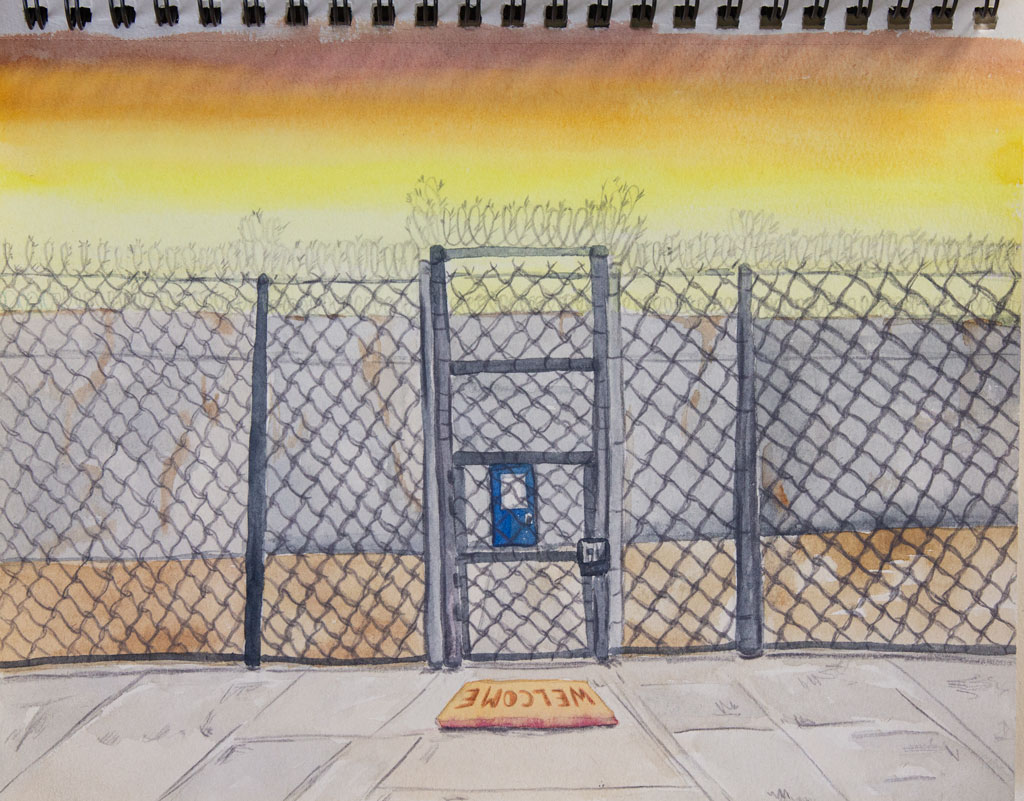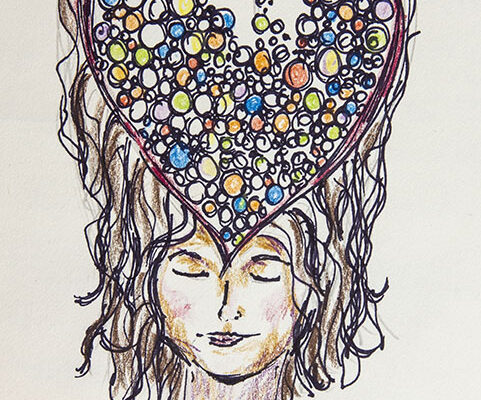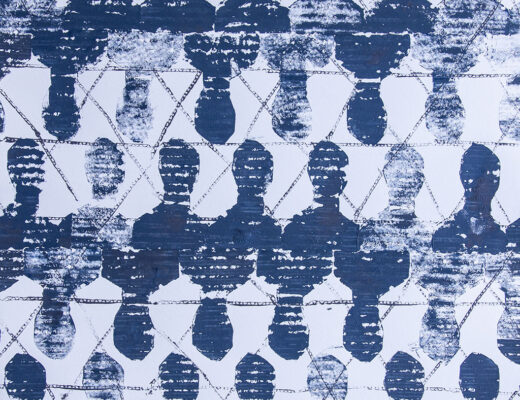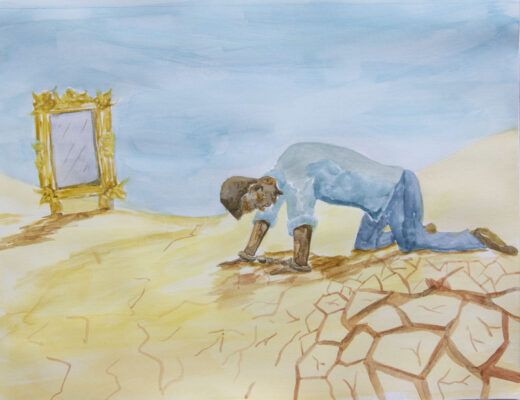“Well-Come Mat”
Drifting tendrils of smoke
Fold upon one another
Suspended and held softly
Like that of a mother
Mind drifting upward
Opening to vast space
Shifting thoughts emerge as
Love seats its new place
Heaviness sitting above
Thoughts burden this crown
With bulging waves of matter
What was up, is now down.
Seeing from a curious view
Putting this matter in its seat
Heart begins to fill
Connecting with all complete.
Ah, but just the beginning
Shift provided from the spirit
New perspective enlightens
So we as witness can bear it.
For love can dispel doubt
When all is welcome at the mat
Turns things around
So fears will fall flat.
The Daily Prison Commute
Welcome to prison from an Art Therapist view. You’re invited! Enter through the heavy iron doors with me. Make sure you’re wearing your surgical mask upon entry. Once the covid-19 screening is complete, security check-in will commence. Honoring the 3-people maximum, patiently wait your turn to place shoes, jacket and all possessions into a tub.
Overheard are officer announcements reminding all of the forbidden entry items. With your belongings in a tote, place your stuff on the conveyor for an airport-like screening and then contents are tossed like a salad in search of contraband. With a wave from security, you are motioned to walk through the metal detector which often signals a bonus pat-down search. Grab your tossed tub o’ stuff and put yourself back together.
In a tight shared space, waiting lines emerge for keys, body alarms, radios and more. Some days you hear of training on the range and witness Kevlar vests, rifles and the like spiraling through. This rough sea of security, medical, programs, administration and support staff converge in this one spot with buzzing, slamming iron doors.
Artmaking begins with a Prison Walk
Beyond this space begins your walk onto the compound lined with spiraling razor wire and massive fencing. Facing east, the morning walk through the fencing always gives way to witness the warm, stunning glow of many ‘a rising sun.
You can count on both hands the number of locked doors and gates to my place of practice. With trepidation, press the button to signal security that “I’m here or we’re here” and “ready to go there, “ unlocking each door through each point. In some institutions, pressing the button is viewed as sacrilege and one is reminded that patience is a virtue. Sometimes you get locked in a vestibule between two doors. You wonder, what if no one is there? How long might I hang out? But then, common sense reminds you of the humanness of this place–in due time.
Now, walk to the internal compound where inmates may be moving food carts or cleaning the fresh droppings from feathered friends that have found the perfect nesting ground. Approach the entry to your wing of the facility, your Shangri-la for the day. Now clocked in, what might this day have in store?
Art as a Visual Language
In the image “Well-Come Mat,” the warm glow of day is captured as it breaks against the cold gray concrete and steel. With watercolor, I painted in the sky. Then, I used colored pencil for details. How may security or staff see the morning? Are inmates afforded this view from their dorms? From my vantage, the beauty of the sky fills less than half the image. Stepping back, the chain link creates a gridded barrier like when trying to focus an image through a camera. Looking straight up the fencing, the feeling is oppressive saying, “you ain’t gettin’ out of here.” As I squint my eyes, the image falls flat, but the sky gently warms. Inviting boredom, horizontal lines flatten, begging a peek over the other side. Up close, there are scuffs on the sidewalk and rusty stains on the building.
Dawn Break Signals
In reflection, twilight points to the desire for hope; for “it’s a new day.” Yet, the warming light contradicts the looming gray fortress. Is it possible we need the dark to experience the light? Is this the way to bear witness to dehumanization creeping in? The World Health Organization (1948) defined health as “a state of complete physical, mental and social well-being and not merely the absence of disease or infirmity… and the definition has not been amended since 1948.” Within the image, a welcome mat is placed upon exit, signaling a cleansing, a preparation of going back into the “real world.” How about “well-come?” Another way stated, “Did well-being take place?”
Artmaking as a Conviction
With conviction, I humbly present an image that began as a “felt sense,” a feeling and thought finding its way through artistic media onto paper (Rappaport, 2009). Bypassing verbal defenses, the art product comes direct from the source making the intangible, tangible. Often, images beg more questions than answers. Behind bars, art becomes perfect fodder for trying to make sense of the senseless. Artmaking as catharsis, allows for a state of flow (Csikszentmihalyi, 2008) to see prison from an art therapist’s view. To deepen an art therapy session, the presence of a masters-level Art Therapist can hold the space and guide the conversation for discovery.
Art Therapist and an Honorary Life Member (HLM) of the American Art Therapy Association (AATA) Bruce Moon (2009) coined the term “canvas mirror” or how we dialogue with the image. From my canvas mirror today, I wiped my shoes on the welcome mat and pondered how others choose to do their sole cleansing.
References
Csikszentmihalyi, M. (2008). Flow: The psychology of optimal experience. New York: HarperCollins Publishers.
Moon, B. (2009). Existential art therapy: The canvas mirror. (3rd ed.). Springfield, IL: Charles C Thomas Publisher, Ltd.
Rappaport, L. (2009). Focusing-Oriented art therapy: Accessing the body’s wisdom and creative intelligence. London:
Jessica Kingsley Publishers. World Health Organization. (1948). Constitution of the World Health Organization: Principles. Retrieved from https://www.who.int/about/who-we-are/frequently-asked-questions




